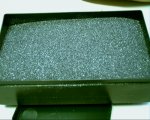mfo
0
- Joined
- Jul 3, 2009
- Messages
- 3,394
- Points
- 0
Hello everyone, I had a quick question in regards to getting the most out of your heatsink. How do you place your module inside of your heatsink? Do you just press it right in? Do you add some sort of thermal filler to bond it to the heat sink? I remember Larry saying that he used epoxy mixed with aluminum oxide powder. How effective would that be? What if one were to use something else like epoxy with copper powder since copper conducts heat better than aluminum? I was thinking of using silver grease since silver conducts heat better than both aluminum and copper. What are your thoughts on this? Thanks.






